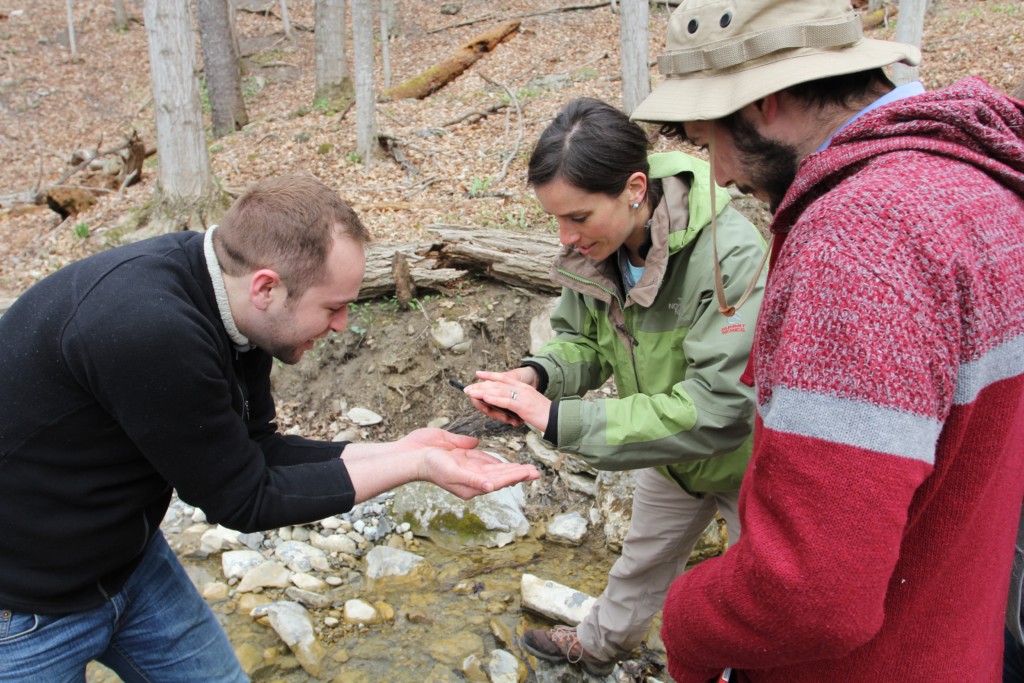Conservation biology students tally life forms for management plan
Click the image above to view photo gallery
A group of ESF students dispersed across 345 acres of forested hills and wetlands in April, cataloging every species they could find to help plan the future of the Skaneateles Conservation Area (SCA).
The final tally: 153 plants, 36 birds, 19 invertebrates, 18 fungi, 15 herpetofauna, nine mammals, six fish species and one extensive management plan.
Students in Dr. Whitney Lash Marshall’s Senior Synthesis in Conservation Biology took on the project as a way to distill all their ESF classes into one hands-on experience. The 65 students in the class split up the responsibilities, with some doing the planning and preparation, some doing the inventory and others preparing the report.
“The idea behind the senior synthesis is for the students to take everything they’ve learned at ESF and apply it to a real-world place, thinking about conservation issues while they do it,” Marshall said. “Some of them went out and met with the town leaders so they got a lot of experience in working with a governmental agency.”
The class produced an 11-chapter management plan for the conservation area, which is about 15 miles west of Syracuse. It includes streams, ponds, wetlands and upland forest, and is popular with hikers, hunters,
fishermen and dog walkers.
“The partnership of ESF with the town of Skaneateles on the bioblitz was a successful start at cataloging the diverse life forms at the conservation area,” said Randy Nonemacher, chairman of the Skaneateles Conservation Area Advisory Committee.
“My hope is that these events can demonstrate to the citizens and leaders of the town what an important asset the SCA is, not only as a place to fish, hunt and walk dogs, but as a place to observe and protect a bit of our natural heritage. A management plan is an important tool for any group trying to maintain and improve an area as large and diverse as the SCA.”
The bioblitz took place on a cold, windy weekend in late April. Between 30 and 40 students, joined by some citizen-scientists, spent 36 hours cataloguing every species they could find.
Marshall said the search turned up some interesting migratory bird species, including eastern meadow-lark, brown thrasher and osprey. The students also identified five salamander species: yellow spotted, northern two-lined, dusky, spring and eastern red-backed.
“We found more salamaders than we had thought we might, and that’s a good thing. It’s a good indicator of stream health,” Marshall said.
Dr. James Gibbs found a snapping turtle, much to the delight of the students who watched him clambering through the wetlands, and several spotted salamander egg sacs.
Nonemacher said one significant outcome of the project is that four ESF students began working as interns, mapping and removing invasive plants at the SCA. They have also helped out at nearby Baltimore Woods and are doing outreach work this summer and into the fall.
“My hope is that continued support by ESF can help us document the problems so that the town will be motivated to act to protect and restore the area,” he said.







